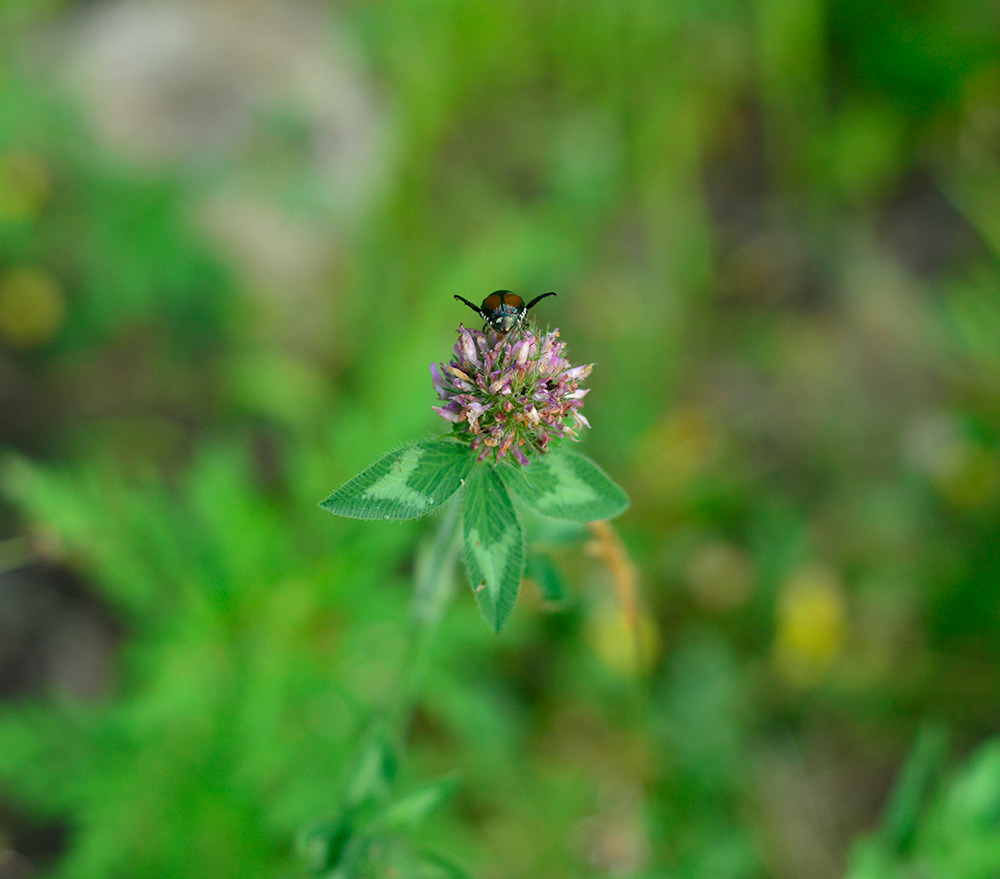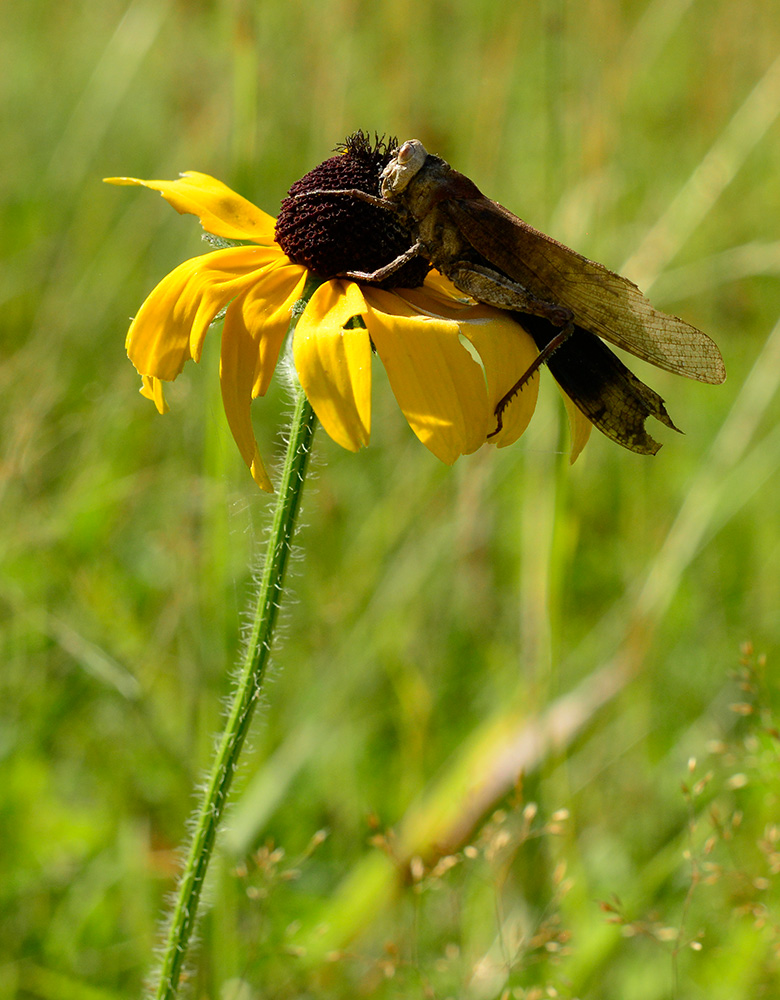Echinacea – IUCN Conservation Status: Varies Echinacea is a genus of herbaceous flowering plants in the daisy family Although flowers in the genus Echinacea are common across the United States, two of the nine species have been listed as endangered species. Thanks to strong recovery, one has been delisted, and the other is now only […]
Red Clover
Red Clover – IUCN Conservation Status: LEAST CONCERN The red clover’s deep roots make them a drought tolerant wildflower This perennial wildflower is called a Red Clover (State Flower of Vermont). They are native to Europe, Asia, and Africa. However, these flowers have been naturalized in North and South America. They can grow to 31” […]
Black-Eyed Susan
Wildflower.org Plant Database: Black-eyed Susan The Rudbeckia hirta (commonly called Black-Eyed Susan) is Maryland’s state flower The Rudbeckia hirta (commonly called Black-Eyed Susan) is Maryland’s state flower. This flower is in the sunflower family. Native to North America, it can be found in every state except Alaska and Hawaii. There are actually a few varieties […]
Star Chickweed
IUCN Conservation Status: LEAST CONCERN I saw this star chickweed just after crossing a stream I took this photo of a star chickweed while out on a hike at Eagle Creek Park. It had been raining intermittently as I moseyed along the trail. When I took this particular photograph, the rain had just stopped. I […]
Torch Ginger
IUCN Conservation Status: DATA DEFICIENT The torch ginger flower was waiting for us in the shadow of nearby palm trees This torch ginger flower was blooming happily for Jill and I on our honeymoon. We were on the Road to Hana, and we had stopped off at the Ke’anae Arboretum. It was there that we […]
Common Sunflower
IUCN Conservation Status: LEAST CONCERN After some patience and steady watering, we began to have flowers bloom. This beaming photo of a sunflower was actually taken in my own backyard. Right at the beginning of April 2020, my wife and I moved to a new neighborhood in Indiana. Our backyard was large and flat, and […]
Butterfly on Goldenrod
IUCN Conservation Status: – LEAST CONCERN An Aphrodite fritillary butterfly feeds ons the goldenrod flower This beautiful wildflower is called a goldenrod. These are perennial flowers that are found throughout Maine. They scatter the mountainsides in the summer months. This photo was taken in Bethel, Maine (a small town of ~2500 people). DONATE These large […]
Virginia Spiderwort
This Virginia spiderwort had intricately detailed stamen I took this photo while out for a hike on my birthday at Eagle Creek Park this year. Matt taught me a technique a few years back for taking macro photography that I was playing around with all day. The idea is to first find a subject like […]
Q&A with Bruce Leander
It’s a little different for me vs. the hundreds of other volunteers. I sent the Executive Director a letter in 2008 suggesting the hours at the Wildflower Center (WFC) were the worst for fine art nature photography (9-5). I suggested they grant me 24/7 access to the center and I would give them rights to use all the photographs I take there. They liked the idea and I’ve been going there on average 2x per week since 2008. I usually arrive before sunrise and shoot for 1-2 hours until the wind picks up or it becomes too sunny. I prefer calm, cloudy days for what I do. I shoot images at the WFC for a few hours then come home and post process them for an hour or two. The WFC uses my images for wall art, web, email, publications and banners around the center. They first used my images to hang in the courtyard restrooms so I usually tell people I got my start with restroom art.
Since 2008. It’s a beautiful place and very quiet and peaceful when I’m there. There are hundreds of volunteers that do hard labor to create a wonderful nature experience. I get to take advantage of that so it is a very symbiotic relationship. I’ve taken over 12,000 pictures at the WFC.
Hummm. There are many but if I had to choose one I would say sitting on my stool in the middle of the arboretum looking up at my favorite oak tree with the sun rising behind it. Quiet, peaceful, colorful, inspiring.
I look for anything that is interesting and I try to capture an image that I would want to look at over and over. It might be a tree or an insect or a wildflower, grass, reptile, mammal or interesting shapes or colors while walking around. I might have a general area of the WFC I plan to visit on a particular morning or I just get out of the car and start walking around. I’ve never gone home without taking some interesting images….even in December and January. In the end, I like to take pictures where you look at it and just go, “wow”.
Nikon D800 and D850. My favorite lens is the 200mm macro. I also carry a wide angle, 24-70mm and a 70-210mm. I use a Uni-loc tripod, cable release and I carry a knee pad. I also have small gentle clamps to hold wildflower stems so the wind won’t move them. I do post processing with Adobe Lightroom and Photoshop and I do focus stacking using Zerene Stacker. So, for the type of photography I prefer to do I’m on a tripod 95% of the time and shooting with a cable release, kneeling on a knee pad. Pretty simple.
I enjoy looking closely at nature so I’m drawn to macro photography. I usually shoot in the range 1:1 to 1:4. So macro and close up. I like out of focus backgrounds and tack sharp subjects. That is why I like calm mornings so I can get sharp images and overcast so I get good color saturation and less super high contrast. I don’t shoot people, birds or nudes. Lately, I’m taking more wildflower focus stacks. Shooting at wider apertures and changing the focus plane taking multiple shots of the subject and then combining them in post processing. This technique produces nice soft backgrounds (bokeh) and tack sharp subjects. You control what you want in focus and what you don’t. It helps to eliminate distracting backgrounds so you can highlight the subject better.
When you take a portrait image of a person you like to put them in the best light and try to make them look a little better than they normally do ;). I do the same thing with wildflowers. I try to make them look the best they can. No insect damage, in great light with no distractions in the background. I often try to line them up so there is a similar bloom in the background WAY out of focus behind the bloom I’m focusing on. This puts a similar blurred color behind the bloom making for a more interesting but non-distracting background. You can see that style in many of the images I have taken. Sometimes I bring interesting botanical subjects home and shoot them in a white box at 5x or 10x. Then you really get to see botanical structures you can’t see with your naked eyes. It’s a whole other world when you get really close.
I would say I really don’t have one favorite but my favorite ones are those where I remember the time and place when I took the picture and the picture itself takes me back to that time. I also like the pictures I’ve taken where the view is so close you see things that you normally wouldn’t see with the naked eye or images that tell a story.
I don’t really know. I guess you would call them on the phone and ask how you could get involved. I interact in person with the staff very infrequently as I’m usually leaving when they are arriving. We wave a lot.
*Volunteer opportunities can be found here: https://www.wildflower.org/volunteer/







